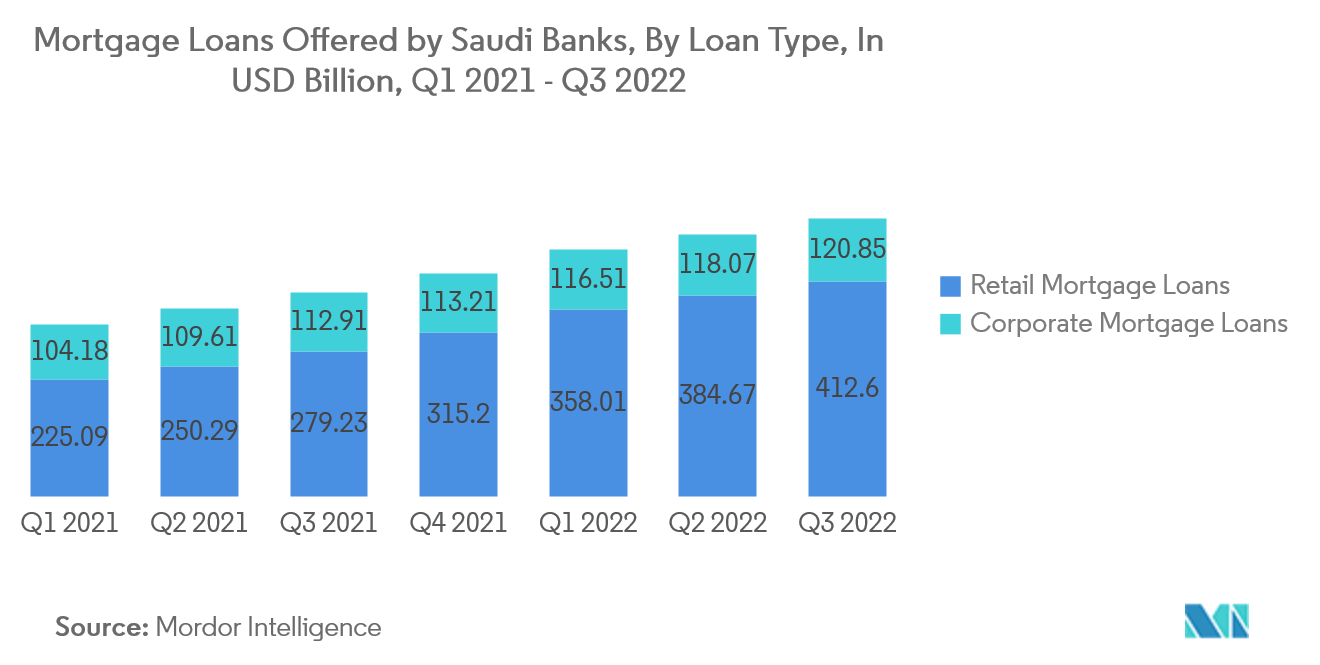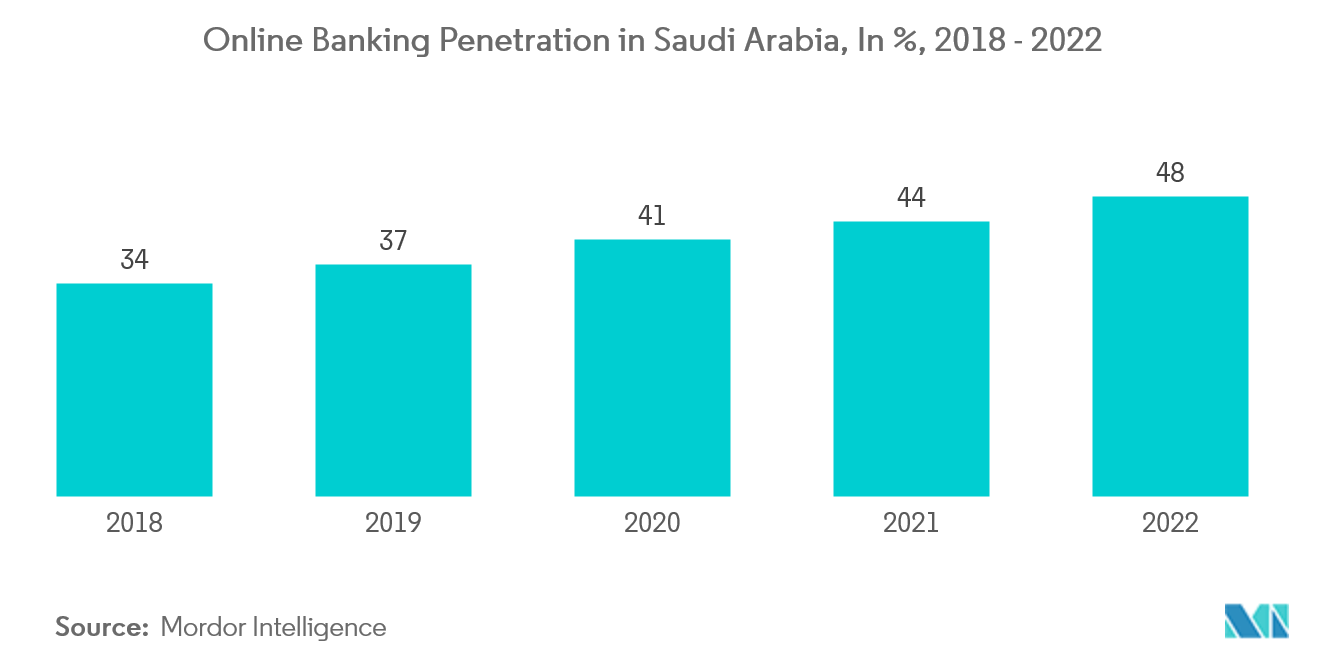Market Trends of Saudi Arabia Retail Banking Industry
Increase in Saudi Retail Mortgage Loans Driving the Market
The availability of mortgage loans has facilitated increased homeownership among Saudis. This has led to a higher demand for housing and, consequently, an expansion in the real estate sector. The growth in mortgage loans has stimulated economic activity, benefiting various industries associated with the housing market, such as construction, home furnishing, and interior design. The expansion of retail mortgage loans has promoted financial inclusion by enabling individuals who were previously unable to purchase a home to enter the housing market. This has allowed a broader section of the population to access banking services and build assets, contributing to overall economic stability and growth.
The rise in retail mortgage loans has provided a new avenue of growth for banks operating in Saudi Arabia. Banks have experienced an increase in their loan portfolios, resulting in higher interest income. This has positively impacted their profitability and allowed them to diversify their lending activities beyond traditional corporate and commercial lending. The increasing demand for mortgage loans has led to the development of innovative mortgage products tailored to the needs of Saudi consumers. Banks have introduced various financing options, such as adjustable-rate mortgages, fixed-rate mortgages, and Islamic financing alternatives compliant with Shariah principles. This product diversification has attracted more customers and enhanced competition within the retail banking sector.

Rising Digitalization in Saudi Arabian Banking Sector is Driving the Market
The move towards digitalization was most evident in the granting of licenses to the two first fully digital banks in Saudi Arabia in the previous year. The move included Saudi Telecom’s STC Pay being renamed STC Bank with a capital of SAR 2.5 billion (USD 0.67 billion) and Saudi Digital Bank (SDB) gaining a capital of SAR 1.5 billion (USD 0.4 billion). These new licenses embody the country’s desire to become a financial hub and increase the efficiency and penetration of its banking system. The impact of these digital banks is hard to gauge, but it is safe to assume that they will be appealing to the underbanked areas of Saudi Arabia, where established banks have few or no branches. With bank penetration at 72% but internet penetration forecast to reach 97% in 2025, digital banks have a clear target audience. Their sector-wide significance will likely come from spurring innovation among the country’s older banks and ensuring Saudi Arabian society is at the forefront of advancements within the (digital) financial system. STC Pay and SDB will fall under the same regulatory framework as other Saudi Arabian banks.


